2015 was a BIG year for marriage equality in Australia. Here's what the hell happened.
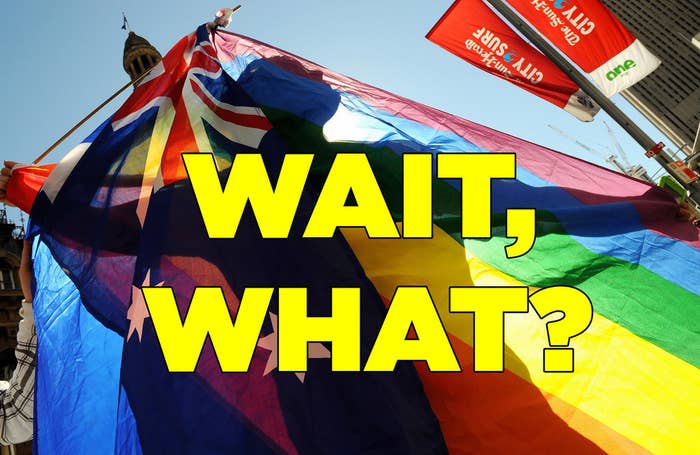
1. The year kicked off with prime minister Tony Abbott in charge.
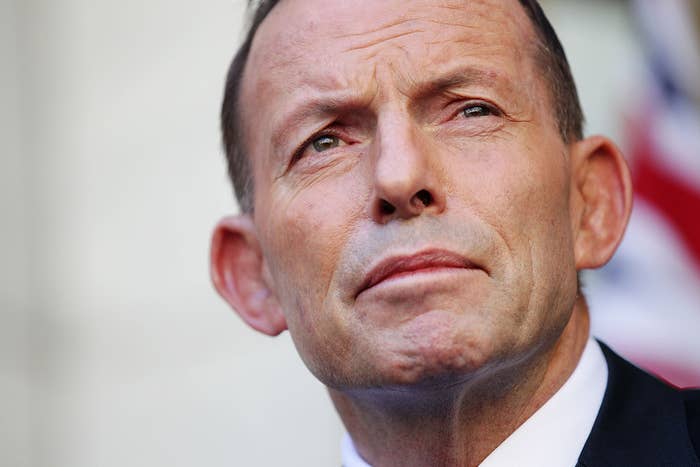
A long-time opponent of same-sex marriage, advocates knew chances of legislating under Abbott were slim.
He had shown no signs of granting a free vote on the issue to government MPs, meaning frontbenchers would face losing their jobs if they voted in favour of same-sex marriage.
2. Marriage became a hot topic early when back in March, channels Nine and Seven screened an anti-marriage equality advertisement on the night of the annual Sydney Gay and Lesbian Mardi Gras parade.
View this video on YouTube
Public broadcaster SBS declined to run the ad, commissioned by the Australian Marriage Forum (AMF), kicking off a discussion about free speech that would last the year.
A few weeks later, the AMF made headlines again when Channel Nine declined to run a second ad from the group.
3. Talk on marriage hit the parliament shortly afterwards, when Liberal Democrat senator David Leyonhjelm brought his "Freedom to Marry" bill forward for debate in the Senate.
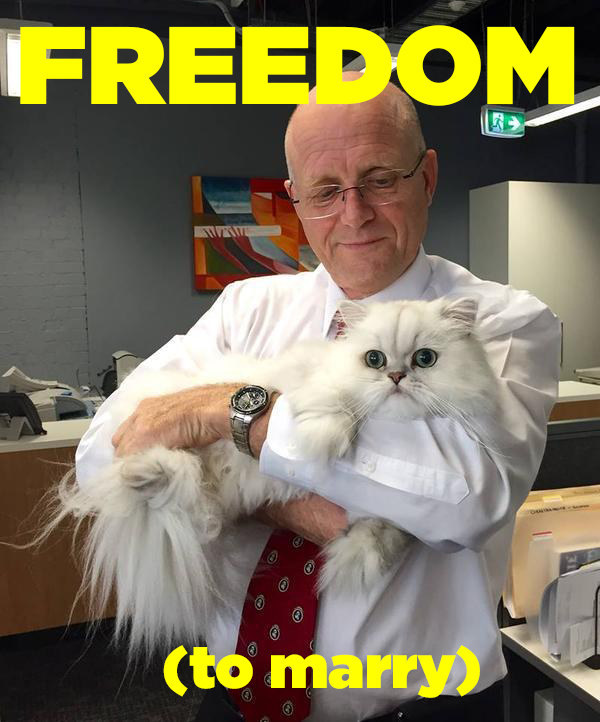
PM Abbott had said prior to the 2013 election that the Coalition party room would discuss a free vote on marriage if a bill was presented – and lo and behold, here was such a bill.
(There were actually two already in the parliament at this point – Leyonhjelm's, and one from Greens senator Sarah Hanson-Young.)
4. But after a week of heightened anticipation, in which Coalition politicians received literally millions of emails from people on both sides of the debate, it just... didn't come up in their party room meeting.
5. The next month saw Ireland legislate for marriage equality by way of a popular vote on May 22 – the first nation in the world to do so.

The Irish vote well and truly thrust marriage equality into the spotlight in Australia – where it would remain for months to come.
6. In the wake of Ireland, some politicians – like independent senator Jacqui Lambie and Liberal senator Zed Seselja – called for a popular vote to happen in Australia.
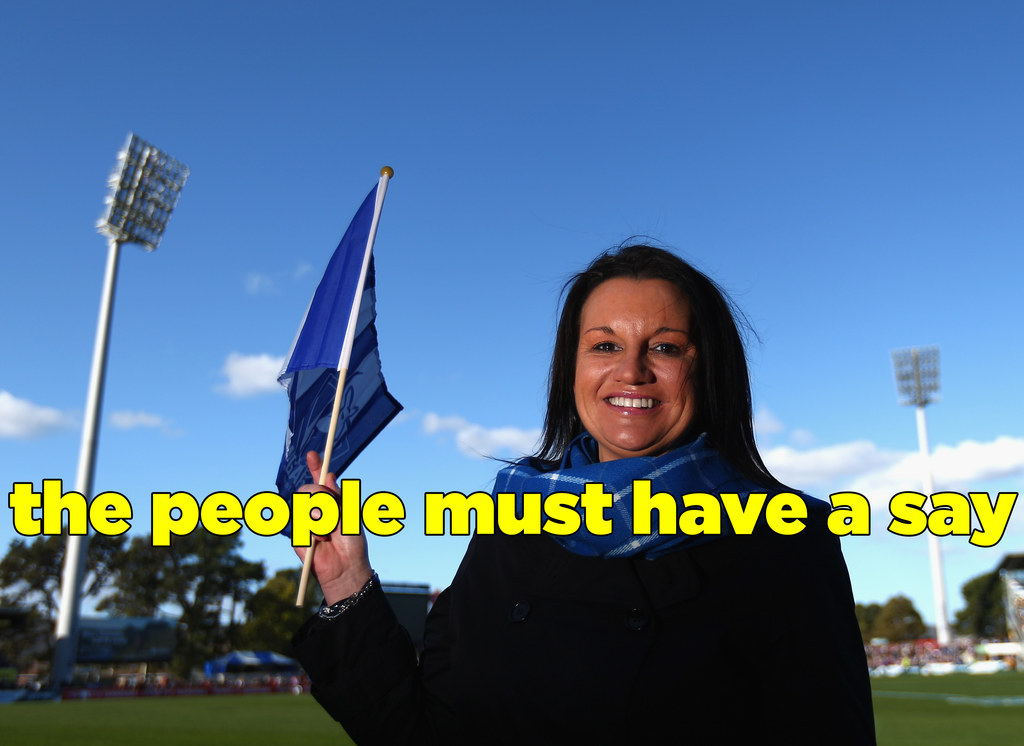
However, the idea was quickly ruled out by Abbott and opposition leader Bill Shorten.
7. And then Bill Shorten said HE would introduce a marriage equality bill to the parliament!

Shorten's announcement was viewed with a fair bit of cynicism from all corners...but it did have the effect of forcing Abbott's hand.
8. In Question Time, Abbott basically said there was no way in hell the Coalition would have a free vote on Shorten's bill – but if a cross-party bill was put forward, there might be a chance.

9. True to Abbott's words, the government ignored Shorten's bill. It was introduced, and everyone got on with their lives.
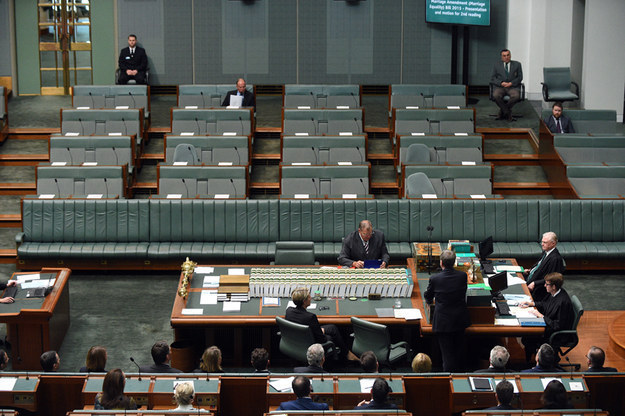
10. Well, except for Canberra couple Nick and Sarah Jensen, who announced in mid-June they would get divorced if marriage equality was legalised in Australia.

11. Also around this time, it emerged that the Catholic Church had distributed anti-same-sex marriage brochures to Catholic school students – a move which angered some parents.
The brochure, titled "Don't Mess With Marriage", was referred to the Tasmanian anti-discrimination commission by Greens candidate Martine Delaney, who complained it was offensive, humiliating and insulting. The tribunal determined the Catholic Church had a case to answer, and the issue is yet to be resolved.
12. On June 26 came the Supreme Court decision that legalised marriage equality across the U.S.
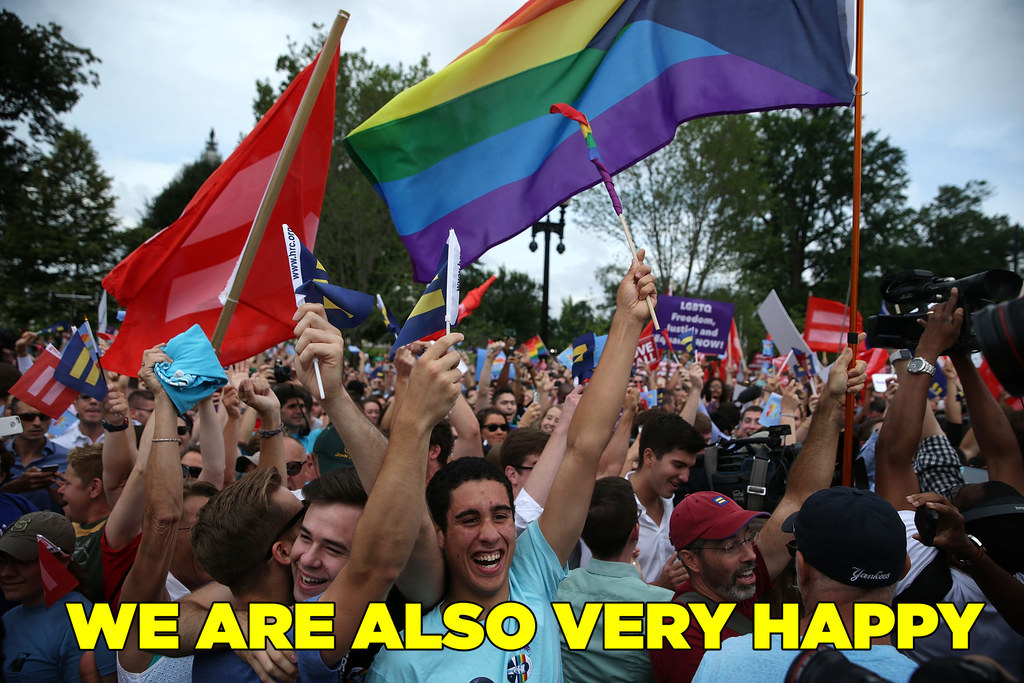
It was Ireland 2.0. Once again, the marriage campaign in Australia gained a whole lot of momentum.
13. And THEN, a small group of MPs from across the Australian parliament announced their intent to introduce a cross-party bill. Wowee!

Liberal backbencher and long-time LGBTI advocate Warren Entsch would introduce the bill, with Liberal MP Teresa Gambaro, Labor MPs Terri Butler and Laurie Ferguson, independents Cathy McGowan and Andrew Wilkie and Greens MP Adam Bandt as co-sponsors.
Advocates were REALLY HAPPY. Rodney Croome of Australian Marriage Equality said the bill was "the strongest opportunity we have ever had of achieving marriage equality".
Opponents were REALLY NOT VERY HAPPY AT ALL. Liberal senator Eric Abetz said Australia should not legalise marriage equality because it's "the Asian century". Later, nationals senator Barnaby Joyce joined the fray, saying he was concerned Asia would find such a move "decadent".
14. In late July came Labor's national conference. There was an internal push for Labor MPs to bind on marriage, meaning they would have to vote in favour of same-sex marriage along party lines – as is usually the case in the ALP.
15. However, a last minute deal struck between the left and right factions of the party delayed moving to a binding vote until 2019.

16. Anyway, by August, pretty much everyone was talking about same-sex marriage, even if they were talking about how much they didn't want to talk about it.
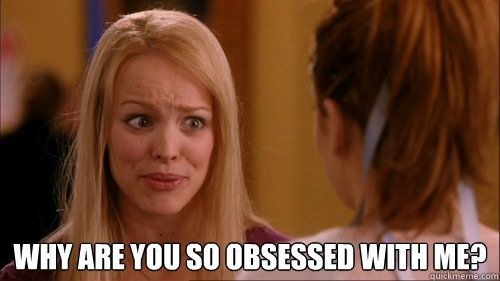
17. And in the parliament, activists on both sides of the debate were lobbying MPs with full force as they returned to Canberra for the August 10 sitting week.
A new anti-marriage equality group called Marriage Alliance launched with a bang. Backed by wealthy businessmen and with ties to the Liberal party, the group embarked on a highly visible advertising campaign that likened same-sex marriage to an iceberg, with unforeseen consequences beneath.
Ads ran on Sky News, Fairfax Media websites, Channel Nine and Foxtel, who experienced a consumer backlash. Seven and Ten declined to screen the ad.
18. Australian Marriage Equality had rainbow lights, and letters!

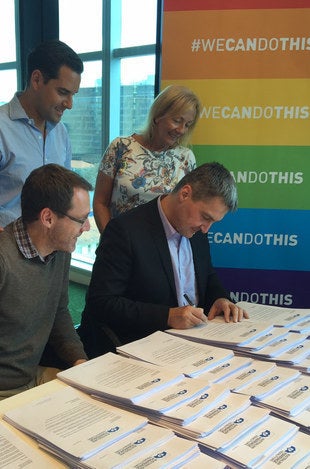
19. The Christian Federation had flowers!
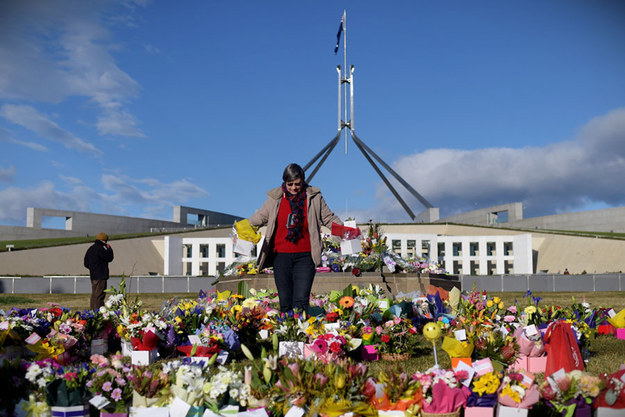
20. And the Australian Marriage Forum had full stops! (And a full page ad in The Australian.)

With the barrage of lobbying and constant media attention, the issue clearly wasn't going away. Everyone was expecting the Coalition to discuss a free vote.
21. But instead, in a plot twist worthy of M. Night Shyamalan, Abbott emerged from an impromptu party room meeting with a new proposal: A PEOPLE'S VOTE.

Abbott said the Coalition wasn't necessarily ruling out a free vote in the next term of parliament, but they planned to take a people's vote to the next election.
This was a huge turnaround for the debate, which had been focused on the Australian parliament for years. Peak lobby group Australian Marriage Equality were forced to drastically – and reluctantly – change tactics, while the new proposal was largely welcomed by the Australian Christian Lobby and other groups opposed to marriage reform.
22. The weeks to follow were filled with confusion, as government ministers gave contradictory answers on what form a popular vote might take. Referendum? Plebiscite? Before the next election? After? It was all up for grabs.
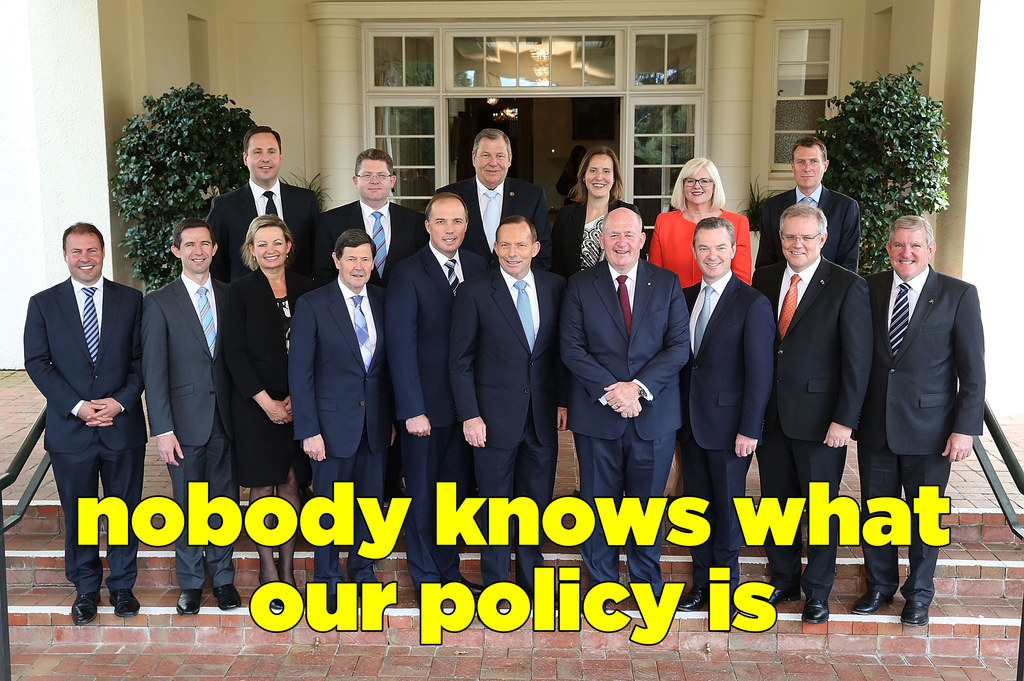
23. Activists at GetUp! sent envelopes full of glitter to Coalition MPs, and Craig Laundy's office was so alarmed they called emergency services.
24. Somewhere amidst all this fuss, Warren Entsch introduced his cross-party bill on marriage equality.
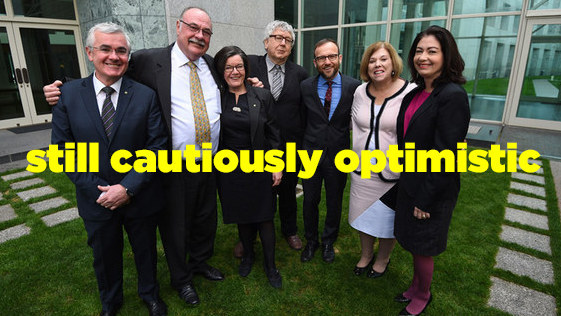
It brought the grand total of marriage equality bills to FOUR – but it was all about a popular vote now.
25. And then a random bunch of cross party senators – including Greens senator Janet Rice and crossbenchers Jacqui Lambie, Glenn Lazarus, David Leyonhjelm, Ricky Muir and Nick Xenophon – introduced a bill for a plebiscite to be held at the next election.
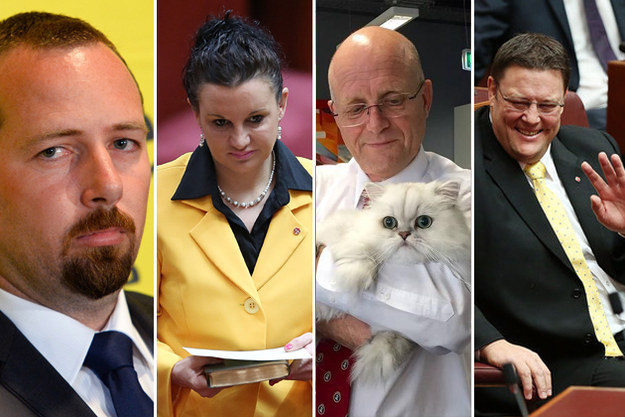
The Greens said they still much preferred a free vote, but the plebiscite bill was intended to call Abbott's bluff by setting the question and ensuring reform would actually occur if a popular vote was held.
It was introduced, and then immediately went off to a senate committee for inquiry.
26. Labor was 10000% not on board with a popular vote, by the way.

27. Oh, and then Julia Gillard announced that she supports same-sex marriage now.
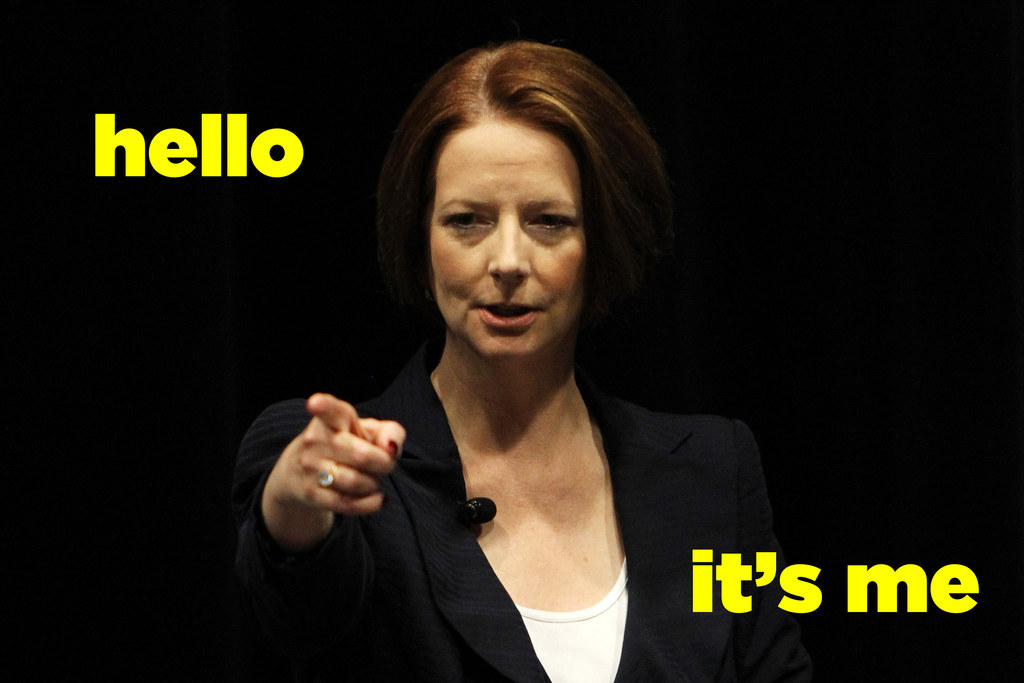
(People weren't ~heaps~ happy about her newfound support.)
28. And THEN Australia changed prime ministers. Yes, again.
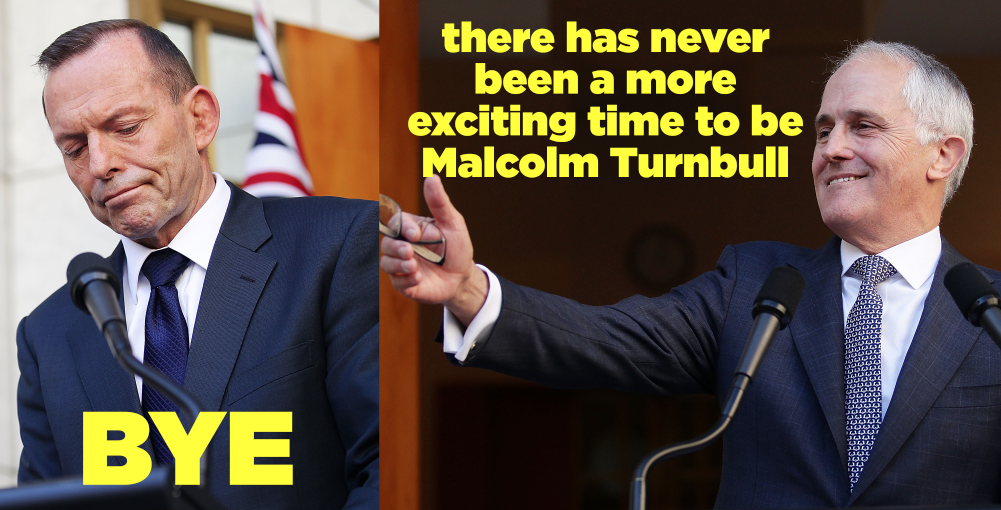
On September 14, Malcolm Turnbull became PM. As a long-time supporter of same-sex marriage, advocates thought his elevation to the top job might be a breakthrough moment.
29. But Turnbull quickly affirmed his support for the new Coalition policy of a popular vote.
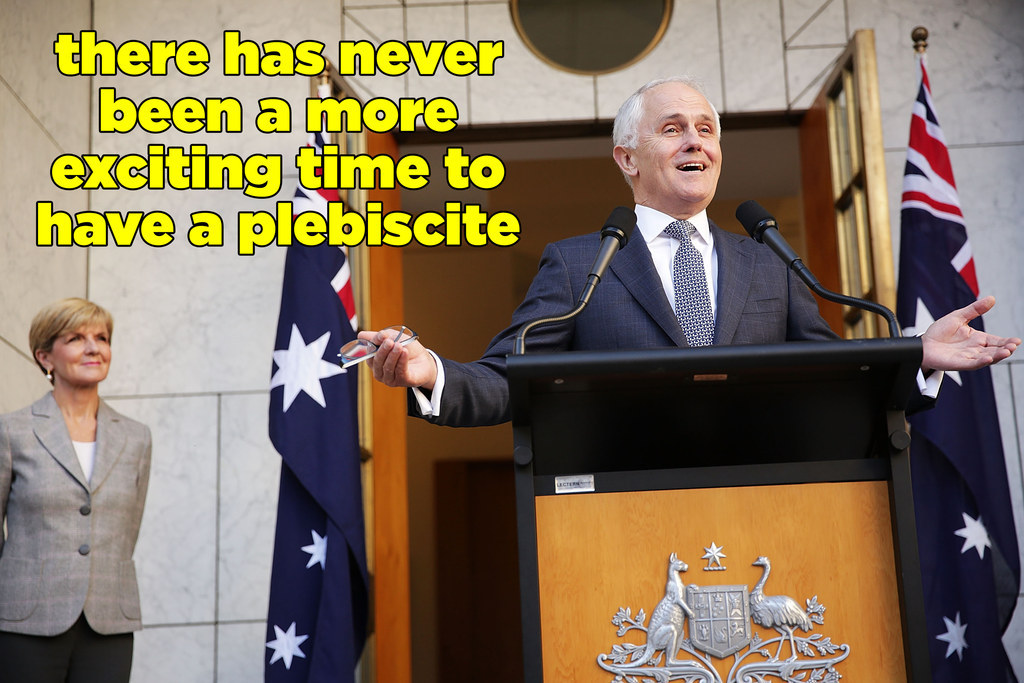
"Our government, our party room has decided that the decision will be taken by a plebiscite," he told the parliament on September 15. (Somewhere along the way, the possibility of a constitutional referendum fell off the table.)
"At the next election, Australians will have a choice. The Labor Party will say vote for us and the marriage equality will be dealt with by the politicians in a free vote after the election. And we will say, if we are re-elected to government, every single Australian will have a say."
30. The very next day, that senate inquiry on the plebiscite bill came back with their findings: in short, a popular vote on marriage is a terrible idea.
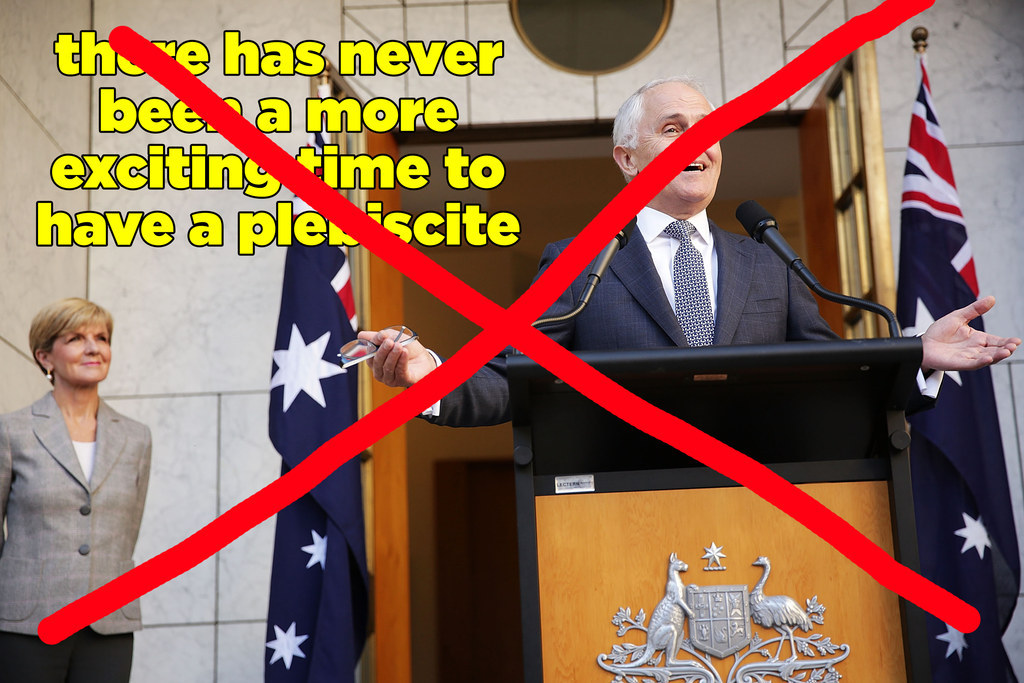
Two Coalition senators delivered a dissenting report, saying a plebiscite was the best way of dealing with marriage equality and slamming the inquiry itself as "an absolute and blatant waste of taxpayers money".
31. The Australian Electoral Commission estimated the cost of a plebiscite on marriage at $158 million.
AEC submission to marriage senate inquiry estimates cost of plebiscite as $44m alongside next election, $158m alone.
32. But the government is sticking by the policy anyway.
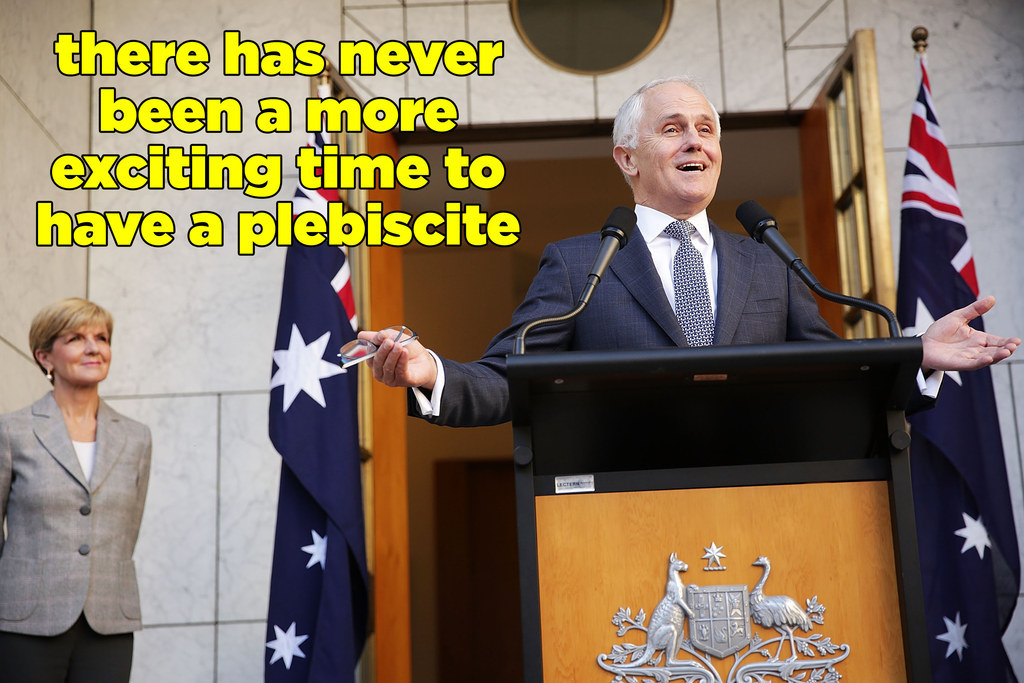
33. A couple of days later, on September 20, the largest anti-same-sex marriage rally in recent memory was held in Sydney.
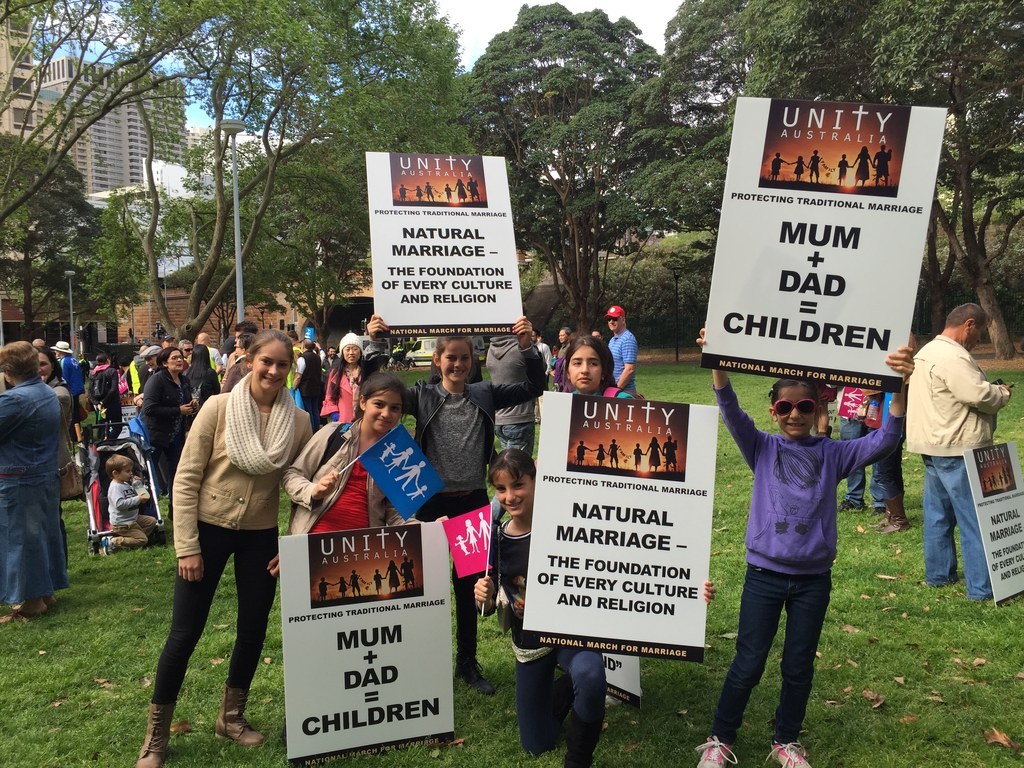
34. And a couple of days after that, this incredibly weird potato protest happened outside Parliament House.
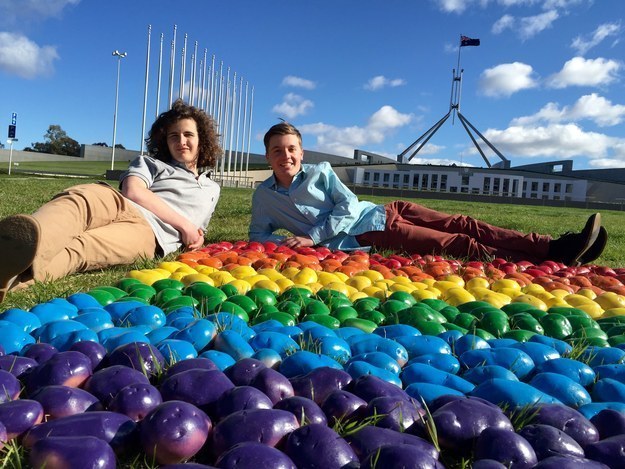
35. On October 20, Turnbull said he thought a public vote on marriage would probably succeed.
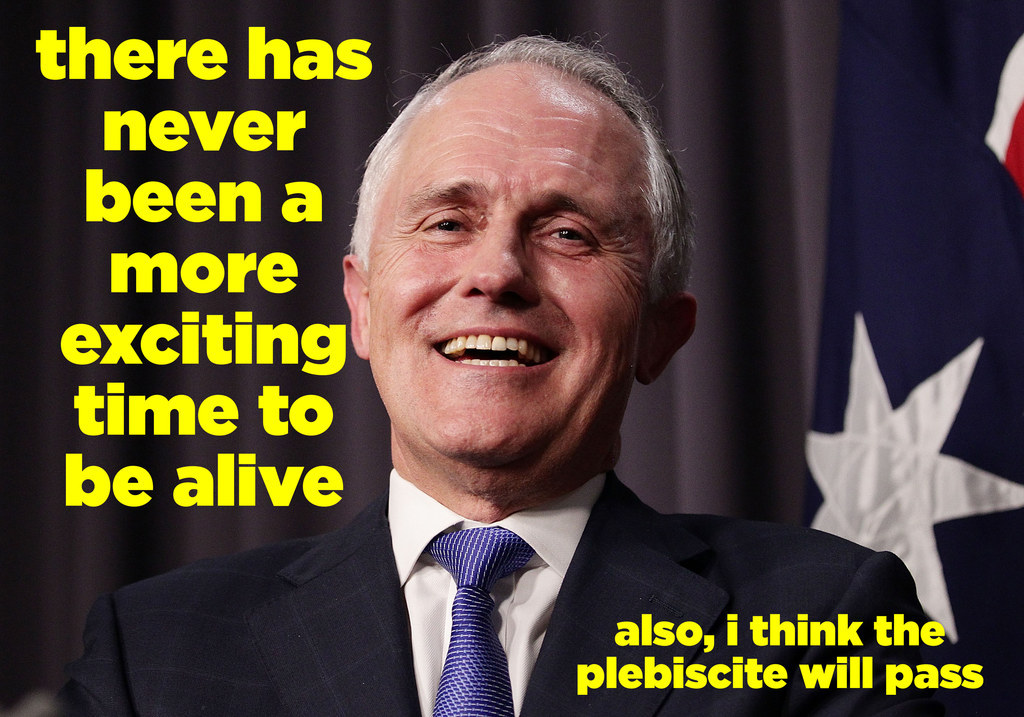
36. And the next day, it was reported Turnbull was considering legislation that would lock in the result of a plebiscite if the vote was successful.
(Normally, a plebiscite doesn't actually compel the government to do anything.)
And that was pretty much it for the year.
37. Despite the ~crazy~ year, advocates are staying positive.
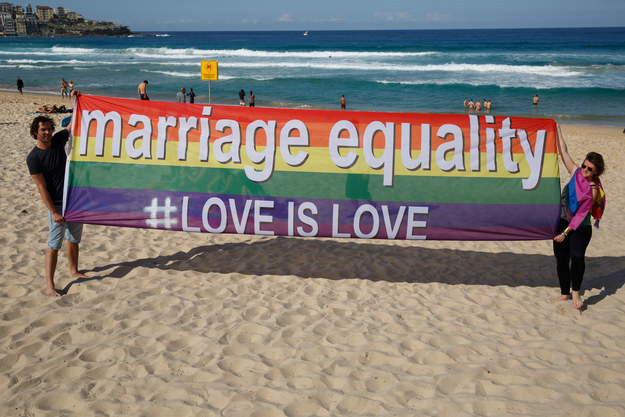
Could 2016 be the year?




